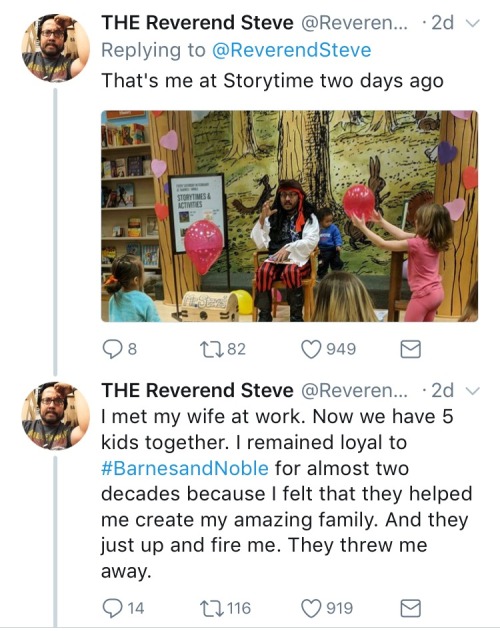I’ve been chronicling the slow demise of B&N for years now, watching the company bleed out, drop by drop, until it has become a shell of its former value. B&N was a cultural center in places without cultural centers. It was a stopover on rainy days in New York, Chicago, and Cleveland and it was a place you could go to get your kids’ first books.
That’s mostly over now. On Monday the company laid off 1,800 people. This offered a cost savings of $40 million. But that’s particularly interesting. That means each of those people made an average of $22,000 or so per year and minimum wage workers – hourly folks who are usually hit hardest during post-holiday downturns – would be making $15,000. In fact, what B&N did was fire all full time employees at 781 stores. From a former employee:
On Monday morning, every single Barnes & Noble location told their full-time employees to pack up and leave. The eliminated positions were as follows: the head cashiers (those are the people responsible for handling the money), the receiving managers (the people responsible for bringing in product and making sure it goes where it should), the digital leads (the people responsible for solving Nook problems), the newsstand leads (the people responsible for distributing the magazines), and the bargain leads (the people responsible for keeping up the massive discount sections). A few of the larger stores were able to spare their head cashiers and their receiving managers, but not many.
Further, the company laid off many shipping receivers around the holidays, resulting in bare shelves and a customer escape to Amazon. In December 2017, usually B&N’s key month, sales dropped 6 percent to $953 million. Online sales fell 4.5 percent.
It is important to note that when other big box retailers, namely Circuit City, went the route of firing all highly paid employees and bringing in minimum wage cashiers, stockers, and salespeople it signaled the beginning of the end.


Streamlining a bookstore may work in theory but in practice a bookstore is far more than a depot for printed matter. It is a play place, a cafe, and a browsing spot. Small booksellers know this and they make their spaces interesting and welcoming.
A Barnes & Noble without a guy in a pirate suit reading stories is a Wal-Mart without the added benefit of selling more than just media. We assume that the people who dedicated their lives to selling books at B&N weren’t there for they money but instead worked there for the love of books. Now they’ve lost those people forever.
John Biggs
http://feedproxy.google.com/~r/TechCrunch/JohnBiggs/~3/2J5gWu-AAR4/
Source link



